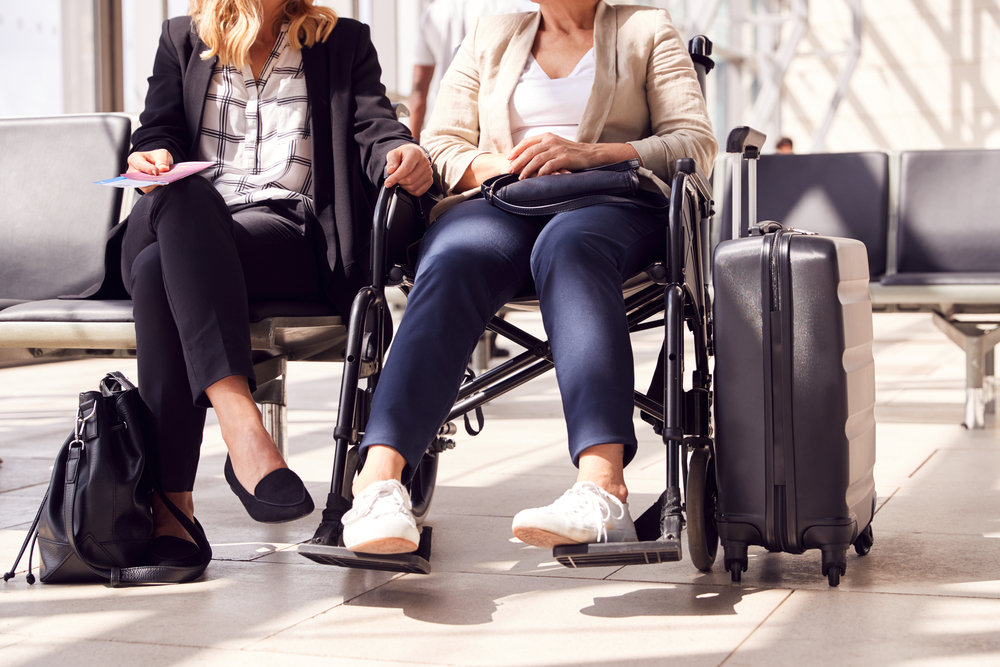Protecting Your Wheelchair from Damage While Traveling
 For those with wheelchairs, airline travel can be difficult. Not only do you have to somehow navigate your way to your seat down those tiny airplane aisles and boarding bridges, but airlines have begun to build a reputation for carelessly damaging wheelchairs during flights as well. A wheelchair is not baggage; it’s an essential piece of medical equipment that enables a person’s mobility—it’s, in essence, a person’s legs.
For those with wheelchairs, airline travel can be difficult. Not only do you have to somehow navigate your way to your seat down those tiny airplane aisles and boarding bridges, but airlines have begun to build a reputation for carelessly damaging wheelchairs during flights as well. A wheelchair is not baggage; it’s an essential piece of medical equipment that enables a person’s mobility—it’s, in essence, a person’s legs.
Advocates have pressed airlines for better training on how to properly handle this equipment so these things don’t occur as often, but it’s also a good idea to take your own preventative measures that may help protect your wheelchair from damage while travelling. Here are a few tips that might help.
Remove and Store Parts
Before allowing your wheelchair to be loaded onto the plane, remove any parts you can and store then in a carryon bag. This might include your footrests, joystick, headrest, and so on. The fewer parts there are on your wheelchair (especially peripheral parts or moveable ones that aren’t a part of the main frame of the wheelchair) at the time of loading, the less chance there is of these parts being broken off before you arrive at your destination.
Use Protective Cushioning
Bring some kind of protective cushioning to wrap around any parts of your wheelchair that you can’t remove and store in your carryon bag, such as the backrest, armrests, and more. This can be special foam wrappings, or something as simple as bubble wrap that you would normally use for shipping fragile items. Wrap as much of the wheelchair as you reasonably can without hindering crewmembers’ ability to load and unload it. This can help absorb any impacts or jolts throughout the wheelchair’s journey, and hopefully prevent any damage to it.
Provide Handling Instructions
Many disable travelers don’t realize that airlines expect you to help manage the risks associated with transporting your wheelchair. Many airlines, as well as the Department of Transportation, encourage wheelchair users to carry instructions on how to safely load and unload their chairs. You can present these instructions when you arrive at your gate. Or, you can print out a sign and attach this to the back of your wheelchair, so that it is clearly displayed for the baggage handlers that will load and unload your wheelchair in both locations.
Know What to Do If Damage Occurs
Even with your best efforts, your wheelchair may, unfortunately, experience damage during the flight. This is a frustrating and even a heartbreaking situation to find yourself in; after all, able-bodied passengers never have to worry about having their mobility taken away from them during a flight, so why should you? Sadly, according to reports from July 2021, airlines damage an average of 28 wheelchairs a day, so it’s a distinct possibility that this will happen to you on a flight, if it hasn’t already.
So, what can you do if it does happen? The first thing you need to do is file a complaint with the airline. This should be done before you even leave the airport. Finding out your wheelchair has been broken can leave you angry and even in tears. The last thing you want to do is speak to representatives of the company responsible for taking your mobility for you. But this is not something that you can delay or avoid.
As soon as you’re aware that your wheelchair has been damaged, even if it’s still usable, you must file a damage report. If you do, the airline is legally required to fix your wheelchair for you. However, if you wait to contact them and only reach out after you’ve left the airport, they are no longer liable for the damages. In addition to filing a complaint with the airline itself, you should also submit a report to the Department of Transportation. You can do so by filling out this form.
Find Wheelchair Parts and Accessories
If your wheelchair is damaged in transit on a trip and you need replacement parts, contact MXP4U to see what we have available. If you’re visiting somewhere near one of our locations, we may also be able to help you with a wheelchair rental while your own chair is being repaired. Additionally, you may want to consider purchasing backup parts for items that are commonly damaged on airlines, like headrests, footrests, and joysticks. Contact one of our many locations today to learn more about our wheelchairs, parts, and accessories.